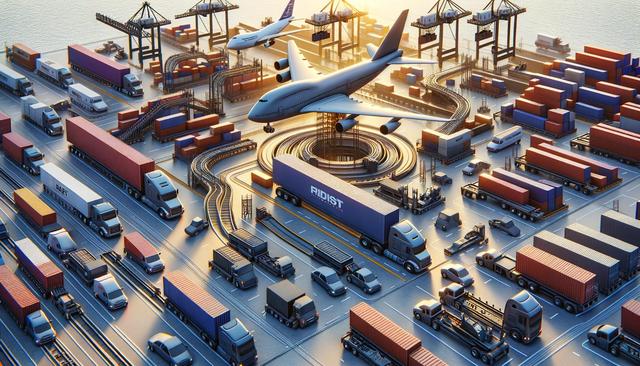Globalization and Its Impact on Freight and Logistics
One of the most defining influences on the freight and logistics industry in recent decades is globalization. As markets become increasingly connected, the demand for efficient and scalable logistics operations has grown significantly. Companies across different sectors rely heavily on global supply chains to move raw materials and finished goods across borders. This interconnectedness has led to the expansion of international shipping routes, increased investment in port infrastructure, and the development of complex warehousing networks.
Globalization has also fueled the need for standardized procedures and technologies that facilitate cross-border trade. Customs clearance, regulatory compliance, and documentation have become central components of the logistics process. To adapt, many freight service providers are enhancing their capabilities in customs brokerage and international regulations to ensure seamless delivery. As global trade continues to evolve, logistics companies are expected to provide not just transportation but also end-to-end supply chain solutions that support international commerce.
Technology Integration and Digital Transformation
Technology is playing a transformative role in shaping the future of freight and logistics. Innovations such as real-time tracking, warehouse automation, and transport management systems have become essential for maintaining operational efficiency and transparency. Logistics platforms now offer integrated dashboards where users can manage shipments, monitor inventory levels, and receive updates on delivery status.
Artificial intelligence (AI) and machine learning are also being adopted to optimize routing, forecast demand, and enhance decision-making. These technologies are helping companies reduce costs and improve service levels. Other key technologies include:
- Internet of Things (IoT): Used for monitoring conditions in transit, such as temperature and humidity.
- Blockchain: Enhances security and traceability in supply chain transactions.
- Robotics: Deployed in warehouses to speed up order fulfillment and reduce human error.
Digital transformation is not limited to large corporations. Small and medium-sized logistics providers are also embracing low-cost digital tools to remain competitive. As technology adoption becomes more widespread, it will continue to redefine how freight and logistics operations are managed.
Environmental Sustainability and Greener Logistics
Environmental concerns have become increasingly important in the freight and logistics industry. With transportation being a significant contributor to global greenhouse gas emissions, there is a growing push toward sustainability. Companies are taking deliberate steps to reduce their carbon footprint through various strategies, including more efficient fleet management and alternative fuel sources.
Among the initiatives being implemented:
- Electric and hybrid delivery vehicles to lower emissions in urban areas.
- Eco-friendly packaging and reusable containers to reduce waste.
- Optimization of delivery routes to minimize fuel consumption.
- Investment in intermodal transport options, such as combining rail and sea freight.
Regulatory pressure is also driving the shift toward greener logistics. Governments and international bodies are introducing stricter emission standards and offering incentives for sustainable practices. As environmental regulations continue to evolve, logistics companies will need to adapt their operations to meet new standards while maintaining cost-efficiency and service quality.
Supply Chain Resilience and Risk Management
Recent global events, including pandemics and geopolitical disruptions, have highlighted the importance of supply chain resilience. The freight and logistics industry has had to adapt quickly to shifting demand patterns, port closures, and transport delays. These challenges have led to a reevaluation of traditional supply chain models and a renewed focus on risk management strategies.
Key approaches to building resilient supply chains include:
- Diversifying supplier bases to reduce dependency on specific regions.
- Implementing multi-modal transport solutions for greater flexibility.
- Using predictive analytics to anticipate disruptions and adjust plans accordingly.
- Establishing contingency plans and emergency response protocols.
Risk management has become a core component of logistics planning. Companies are investing in technologies and partnerships that provide greater visibility and control over their supply chains. This proactive approach helps mitigate the impact of unforeseen events and ensures continuity of service in a rapidly changing global environment.
Changing Consumer Expectations and Last-Mile Delivery
Consumer behavior is evolving, and so are expectations around delivery speed, transparency, and convenience. The rise of e-commerce has significantly altered logistics operations, making last-mile delivery a critical focus area. Shoppers now expect quick, reliable, and often same-day delivery services, prompting logistics providers to innovate in their approach.
To meet these demands, companies are exploring various methods:
- Micro-fulfillment centers located close to urban areas for faster dispatch.
- Advanced route planning tools to reduce delivery times.
- Real-time tracking and communication features for customer updates.
- Flexible delivery options, including lockers and scheduled time slots.
Urban logistics strategies are also being developed to handle the complexity of dense population centers. These include using electric bikes, drones, and autonomous vehicles for localized deliveries. As competition intensifies in the e-commerce space, the ability to offer efficient and customer-centric last-mile solutions will become a key differentiator for logistics companies.
Conclusion: Navigating a Dynamic Industry Landscape
The freight and logistics industry is undergoing significant transformation driven by globalization, technological advancements, sustainability imperatives, and shifting consumer expectations. Businesses operating in this sector must remain agile and forward-thinking to address emerging challenges and seize new opportunities. Whether through investing in digital infrastructure, embracing green practices, or enhancing delivery models, logistics providers have a critical role in shaping the future of global trade. Staying informed and adaptive is essential for continued success in this dynamic and essential industry.




Leave a Reply